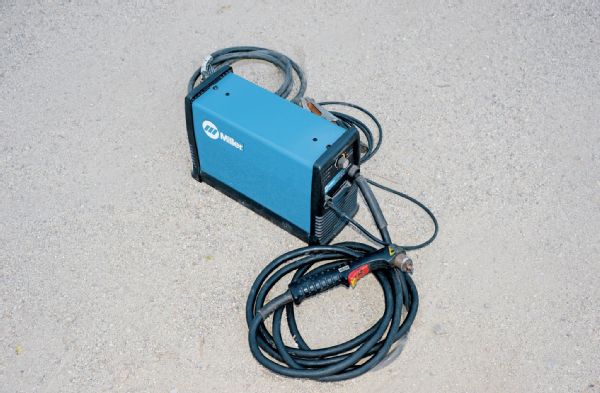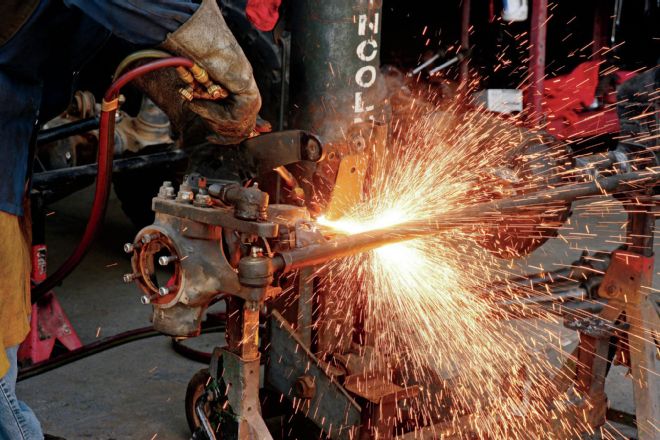
 John Cappa
Former Editor, Four Wheeler
John Cappa
Former Editor, Four Wheeler
It doesn’t matter if you are just getting into your first Jeep or fabricating a frame for your tenth, we all need some way to cut metal for our projects. Choosing the right tool for the job is extremely important. Using the wrong metal slicing device could be as effective as eating soup with a butter knife or as messy as cutting a tomato with a chainsaw. To help you pick the best tool for your Jeep chopping needs, we’ve compiled a list of common cutting tools and where we use them successfully. Of course, there are other specialty metal cutting tools available, but we decided to stick with tools that were the most useful and commonly used by the average garage fabricator.
Sheetmetal Snips
You can typically buy sheetmetal snips in sets of three. The kits include a pair of snips for right turns, left turns, and straight cuts. It’s been our experience that these are a waste of time and money for use on your Jeep. The snips are designed for duct work on flat sheets of thin material that are hidden in an attic. The only place you can really use them on a Jeep is on the body metal. Unfortunately, they are not very good for that task. They often leave sharp, ugly, and gnarly edges that require a lot of work to smooth over. The other issue is that Jeeps often have sandwiched layers of sheetmetal that the snips cannot easily cut through. Hidden pockets, bends, and edges on the backside of a body panel make it impossible to make cuts in some areas. The tin snips are better off staying in your tool box, unless you are cutting out a quickie patch panel to cover up a rust hole in the floor for winter.
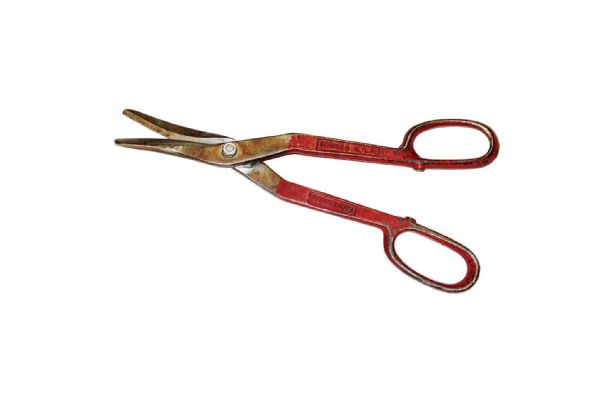
Jig Saw
While originally designed for wood, a jigsaw can be used to cut metal in just about any shape, including tight circles. You’ll need to load the jigsaw with the correct bi-metal blades. It works OK for cutting various shapes in thin flat sheets of steel and aluminum for your project. If you want to avoid scratching the material, you can put masking tape on the shoe of the saw. This helps but won’t keep the shoe from scratching delicate painted surfaces or polished aluminum. We’ve found that, in most cases, the blades are too fragile for any on-Jeep bodywork and fender trimming. We’d choose a different cutting method for fender trimming unless that’s all you have to work with.
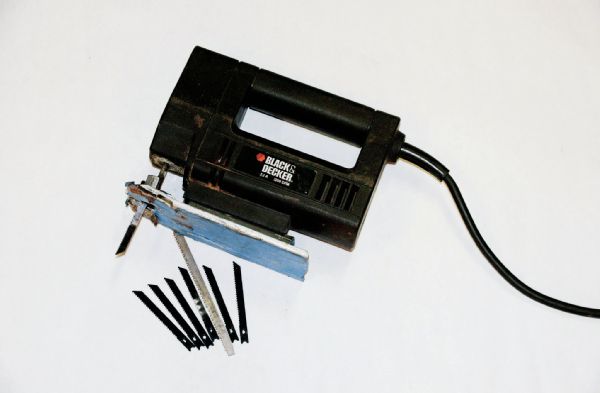
Circular Saw
Most do-it-yourselfers have a circular saw. They are extremely common and inexpensive. Abrasive wheels are available for most circular saws. It may seem like a fantastic idea for cutting straight lines in sheetmetal, but in practice, it just doesn’t work out all that great. A circular saw with an abrasive wheel is better suited to cutting tube stock and solid bars. There are also steel circular saw blades designed to cut aluminum. We have even heard of some people using a plywood blade installed backward to cut aluminum, although we don’t plan on trying it ourselves. Ultimately, there are better tools for cutting metal. The circular saw should be left in the woodshop.
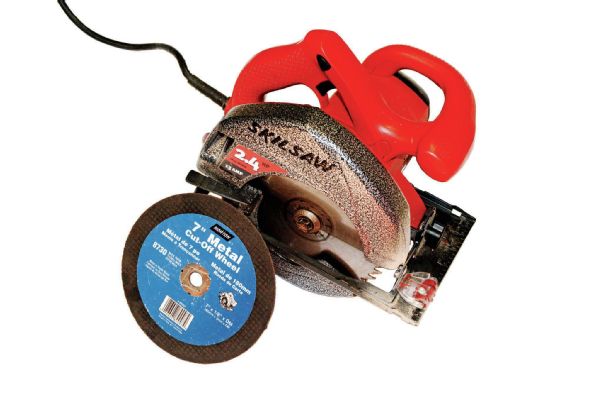
Angle Grinder
A 4 1⁄2-inch angle grinder is by far one of the most useful and inexpensive fabricator tools. Aside from a drill, this is probably the first fabrication tool you should purchase. Several different types and thicknesses of abrasive and sanding wheels are available for cutting, grinding, and sanding. For cutting, you’ll want to use the 0.045-inch-thick wheels. You can cut through pretty much any thickness of steel, within reason. We’ve easily zipped through up to 1⁄2-inch-thich steel brackets and even thicker U-bolts. A 4 1⁄2-inch angle grinder with a thin cutting wheel requires a lot of arm strength and hand control to make a clean cut without damaging the disc. Think of it as a rough cut tool, though. There will be a bit of cleanup and smoothing needed after making a cut with an angle grinder. The tool can bind and jump off of the work piece. If it gets away from you, it will damage surrounding surfaces. The spinning cutting wheel creates heat in the metal that can burn paint. For these reasons, it’s not a great tool for cutting painted body metal that needs to look good. The angle grinder is really best suited for use on raw steel projects. It works great for cutting rusty bolts or removing unwanted brackets from axles and frames. Once you are done removing the bracket, you can follow up with a grinding or flap wheel to smooth the surface. If you want to grind out a weld to remove a bracket, try using the 1⁄8-inch-thick abrasive wheels. For aggressive surface grinding and shaping, use the 1⁄4-inch-thick discs. One huge advantage of the angle grinder is that it can cut or grind any metal, no matter what the hardness is. That’s something even the most expensive saw blades can’t do. Cutting Grade 8 bolts or hardened steel is right up the alley of an angle grinder. When shopping for an angle grinder, look for at least a 7.5-amp motor and a comfortable handle and switch. We prefer a paddle-type switch because it’s safer and causes less hand fatigue than other switches on the market.
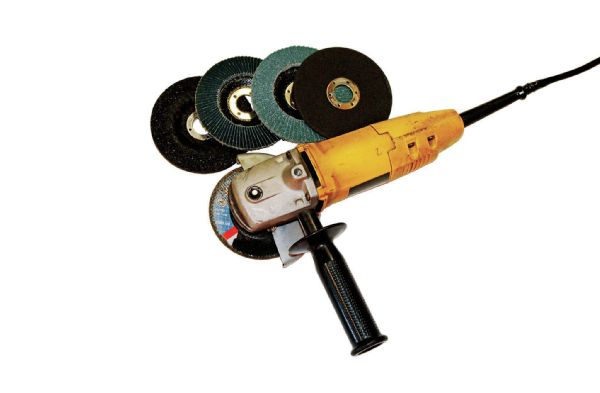
Reciprocating Saw
If you think of the reciprocating saw as a demo tool, you can’t go wrong. It won’t make a clean cut, especially in sheetmetal, and you’ll be lucky if you can get it to cut straight. It’s the one unassuming Tasmanian devil of a cutting device that you could use to literally chop a car in half. Because of its aggressiveness, it’s generally not a good tool for precision cutting or bodywork, unless you simply need to trim a reinforced area where multiple sheets of body metal are spot-welded together. Many different lengths of blades with different tooth counts are available. Be sure to match the job with the correct blade and always keep plenty on hand—You will bend and break blades regularly. The long stroke of the reciprocating saw will cause problems in tight areas, so watch that the tip of the blade doesn’t make contact with wires, fuel and oil lines, or something solid that could cause it to bend. We prefer the unbridled power of a corded 120V reciprocating saw over the cordless models. However, the cordless models offer a lot of convenience in the field and in the shop if you have multiple batteries. When shopping for a corded reciprocating saw, look for at least a 9.5-amp motor. If looking at cordless models, more volts means more cutting power. We’d also step up into a model with a lithium battery for decreased weight, increased runtime, and longer battery life.
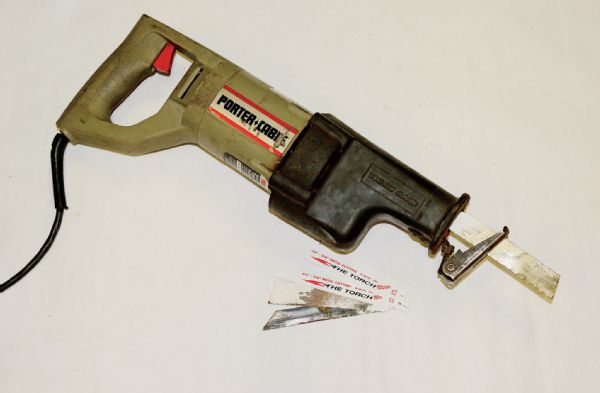
Air Saw
There is no better tool for fender trimming and general body metal cutting than an air saw. It’s small, light, and extremely maneuverable. It takes some skill to cut a straight line, but it’s not impossible. Air saws do consume a moderate amount of air, though. Make sure your compressor can keep up by matching your air saw’s consumption with compressor output. There are a variety of blades available. We’ve had really good results using hacksaw blades. You can snap off about 2-3 inches of hacksaw blade and install it in the air saw. It’s a lot cheaper than buying new air saw blades. One full hacksaw blade can be broken into about four or five air saw blades. If you are cutting a painted surface, mask the area with two or three layers of masking tape to protect the paint. You can also flip the blade so it cuts on the forward stroke and pushes the shoe away from the body metal. Running a file over the freshly cut surface is enough to smooth any rough edges. Sandwiched sheetmetal that has been spot welded together, and thicker materials in general, will slow an air saw down significantly. Thicker materials also chew up the teeth on the blades pretty quickly. Bring in the big guns like a reciprocating saw or angle grinder for the thicker sections, and then finish up with your air saw.
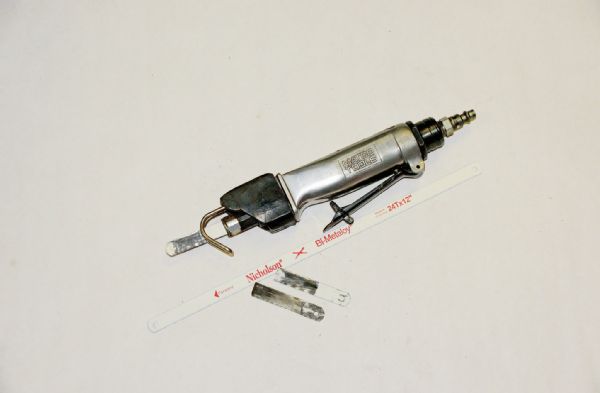
Cut Off Tool
Cutoff tools work great for precision cutting and trimming. Because of their size and design, they are best suited for smaller jobs and thinner materials, especially in tight areas. The problem is, most of them require massive amounts of air to get any job done. If you plan on using a cutoff tool regularly, you’ll need to match your compressor output and tank size to the cfm requirement of the tool. You can trim painted metal with a cutoff tool, but you risk the possibility of burning the paint, if that’s an issue. It’s a convenient compact tool for removing tack welds or cutting rusty bolts. We’ve also successfully used cutoff tools as a sort of mini grinder for working in tight areas.
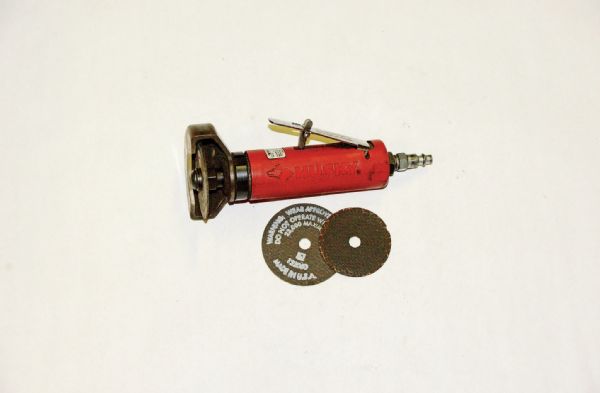
Die Grinder
You may think of a die grinder with a rotary file as a specialty tool, and it sort of is. Rotary files are available in many different shapes and are perfect for complex and intricate procedures like porting an engine, opening up a pocket for bolt head or tool clearance, or grinding out frame cracks to be welded. The only residue they leave behind is the bits of metal that have been chewed out of the work. Tools that use abrasive material for cutting, usually leave behind bits of dust and metal that need to be cleaned up. If not cleaned, the dust can contaminate a weld. If you’re working with aluminum, use a cutting oil or wax on the bit to keep the sharp edges of the tool from becoming clogged with metal.
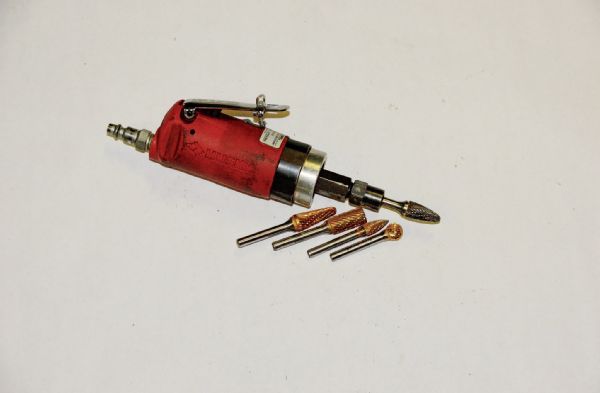
Chop Saw
A chop saw does exactly what the name implies. It’s a relatively crude and inexpensive tool for efficiently making rough cuts in tubing, bar stock, and even steel plate that is less than 4-5 inches wide. If you stand the plate steel on end, you can buzz through 1⁄2-inch-thick material or thicker. We’ve even cut 3-inch 0.500-wall axletubes with a chop saw, but you have to be patient. The cuts are usually not very square; it’s messy; and tt makes a lot of sparks and shoots them across the shop, spraying abrasive dust and metal bits everywhere. It’s a good tool to use outside.
Torch
You can cut pretty much any thickness of steel with an oxyacetylene torch. All it takes is the proper tip and gas adjustments. The cut can be really messy and ugly or clean and smooth, it all depends on how steady of a hand you have. Purchase the tips designed for cutting the material you plan to encounter most often. A tip size 000, 00, and 0 will cover most Jeep projects and give you the ability to burn through from 1⁄8-inch up to 1⁄2-inch-thick steel. A curved gouging tip is incredibly handy for blowing out the welds on brackets. For a clean job, most of us will almost always need to grind and smooth our torch-cut surface. Other advantages of having an oxyacetylene torch setup include the ability to gas and braze weld. Add an inexpensive rosebud tip to your rig and you can use your torch to heat up and help loosen stuck bolts or bend metal. You generally do not want to torch-cut thinner materials like body metal. The heat will obviously burn paint, but more importantly, it will warp the metal. For cutting duties, torches should be reserved for removing heavy axle and frame brackets or cutting steel plate. There are many different oxygen and acetylene tank sizes available, but an oxyacetylene torch rig isn’t compact. It takes up a lot of space, so it can be hard to justify in a small garage, especially if you don’t plan to use it often.
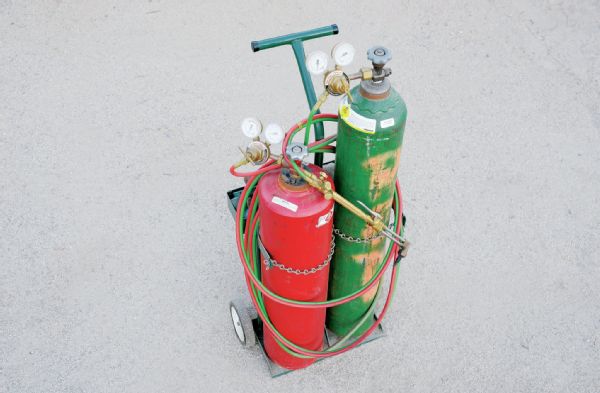
Plasma Cutter
While not as versatile as a torch, a plasma cutter is much cleaner and works cooler than an oxyacetylene torch. The procedure is quick enough that the cut material doesn’t absorb as much heat as a torch-cut piece. This can help keep thinner materials from warping. As with all tools that require compressed air, you should match your compressor output to the plasma cutter’s requirement. Most Jeep projects can be completed with a plasma cutter capable of cutting up to 3⁄8-inch-thick steel. More powerful and expensive plasma cutters are not needed in most cases. A plasma cutter can be used to do many of the same jobs that an angle grinder, reciprocating saw, and others can do. You can easily remove and reuse axle and frame brackets by angling the torch head to hose away the welds, leaving the bracket and base metal intact. It takes some practice, but it’s far easier than using a torch and much quicker and cleaner than using a grinder to do the same job. Blowing off rusty bolt heads and rivets is so easy and trouble-free that you’ll be downright disappointed and irritated with any other method you have used in the past. With a steady hand, you can cut out nearly any shape for bumper, suspension, and axle brackets among other things. The finished cuts will need very little cleanup once your skills improve. Even though a plasma cutter runs cooler than a torch, you still can’t really use it on painted surfaces. The paint will burn and look bad. But, if you really don’t care what the body looks like, a plasma cutter is faster than any other method of cutting body metal. Unlike a gas torch, a plasma cutter can slice through any electrically conductive metal, including steel, aluminum, copper, brass, and so on. If you find yourself removing a lot of brackets and cutting out new ones from a sheet, the plasma cutter really is the best tool for the job. The newest inverter-based plasma cutters are very compact and easy to stow away.
